One of the first things I wrote about when I started blogging, was a 10-day trip to the Spanish Basque Country. I wrote very differently than I do now. The posts about that trip are short reports in chronological order and, let’s face it, they’re not that good.
So I decided to gather what I’d written about that trip in the past, add extra information and turn it into a Spanish Basque Country itinerary for a 10-day trip.
Here you go!
Contents
- Spanish Basque Country itinerary – Day 1: Bilbao
- Day 2: the Enchanted Forest of Oma
- Day 3: from Vitoria-Gasteiz to Getxo
- Day 4: Portugalete
- Day 5: the Guggenheim Bilbao
- Day 6: a day at the beach
- Day 7: one day, four towns
- Day 8: the San Sebastian Aquarium
- Day 9: El Peine del Viento and Monte Urgull
- Day 10: Monte Igueldo
- Our accommodation
- Our accommodation in San Sebastian: pension Basic Confort 2
- Things to take on your trip to the Basque Country
- Don’t forget travel insurance
Spanish Basque Country itinerary – Day 1: Bilbao
We could have driven from Belgium to the Spanish Basque Country, but at the time we were both still working full-time jobs and driving would have taken more than two days out of our vacation time.
It would have also meant that we’d have the car with us the entire time, which is practical for road trips, but not as much when you’re staying in cities and that’s what we’d planned to do.
So we flew into Bilbao and took a bus to the city center. That only set us back €1.45, but prices may have gone up since 2012.
We checked into our hotel and then immediately headed out to do some exploring. We had a paper travel guide with us that had some walking routes, so we half followed those to make sure we at least passed by some sights on our walk.
Our first stop was in Bilbao Old Town. As you’d expect from an old town, there were lots of little streets and alleys. You could also do a bit of shopping here, but during siesta time – from around 2 p.m. until 4.30-5. p.m. – most things close, so keep that in mind. We didn’t go shopping, but instead had a drink and some pintxos at the Plaza Nueva, a square with bars all around.
Pintxos are a typical Basque dish. They are often mistaken for tapas. Tapas you often get for free in the south of Spain when ordering something to drink. Pintxos are typical for northern Spain, more sophisticated than tapas (f.e. little sandwiches with tortilla) and they need to be paid for.
You pay €1,5 (average) to €3 (expensive) for one pintxo. Payment is made through a “system of honor”: the pintxos are laid out on the counter and you can take one when you order a drink. You can also go back for more, although it is custom among the locals to move to another bar and then have a second pintxo there.
When you leave, you tell the waiter how much pintxos you’ve had and he believes you. Mind you, they keep count as well.
To compensate for having those pintxos, we went for a walk along the riverside afterward. There’s a large boulevard for pedestrians on the side of the Old Town, so that it’s nice to walk there even though there’s also a busy street.
We also walked by a funicular that takes you up the hill to get a good view on the city, but unfortunately that was closed for maintenance works when we were there. We did, however, get a good view of the Guggenheim Museum from this side of the river.
At the Puente de Deustu we crossed the river again to get back into the new part of town. Before we knew it, we’d already covered a large area of Bilbao and it was only our first day there!
Day 2: the Enchanted Forest of Oma
On our second day, we rented a car to do a little road trip. Our first stop was also our main stop of that day: the Enchanted Forest of Oma.
The Painted Forest of Oma is located near Kortezubi and can be reached by car. Our Michelin Green Guide for Spain advised us to park at the restaurant of Lezika. The trail to head up to the Forest or ‘Bosque Animado de Oma’ is just across the road from the parking lot. You can’t miss it.
It’s about an hour walking uphill, on a road between the pine trees, until you reach the Forest. It was a pretty decent climb but I enjoyed it as it was so peaceful and quiet there. We only passed one other couple on our way up.
Note: you cannot drive all the way up to the Oma Forest. You have to leave your car on lower grounds and hike up.
The Painted Forest of Oma is part of the Parque Natural de Urdaibai that was transformed into some sort of outdoor art gallery by the artist Augustín Ibarrola. He combined the techniques of rock painting out of the Paleolithic period with Land Art, an artistic movement that uses nature as the material with and on which to create something.
Ibarrola painted the pine trees in such a way that, when you look at them from a certain angle, the stripes and signs on the different trees form an image. There are small yellow circles with numbers on the spread throughout the Forest. They’re there to show you where to stand and in what direction to look to see all of the shapes and figures.
Online you can find a map of the Bosque de Oma with the titles of the different works next to the corresponding numbers, but the most interesting thing to do is just walk around and let your imagination run wild. You might spot something that no one else sees.
Visiting the Painted Oma Forest is thus truly an individual experience. What you see changes with every step you take and no one is able to see the exact same figure as you do at the same moment.
We spent about half an hour in the forest itself and between half an hour and an hour to get back to our car.
You don’t have to go back the same way you came though. At the beginning of the Forest, you can see a small road on your left side – it’s a nice viewing point as well – which says “Oma 2 km”. If you follow that path it will take you to the road through Oma. You just have to follow the arrows. This walk is entirely different than the one you took to get to the Forest, but nevertheless more than worth it.
You’ll get spectacular views of the valley in which Oma (a village consisting of 5 houses, a chapel and a cow) is located. At the end of the road, you’ll be back at the parking lot. You can, of course, also take the tour the other way around, but it will be less clear since there are no arrows directing you towards the Bosque if you start in Oma.
Bermeo and Plentzia
Afterward, we drove on to Bermeo and parked (for free) near the harbor and the tourist information center. We had a nice walk along the harbor and the pier and ate some pintxos on a terrace viewing the boats.
Our final stop on that day of our road trip was Plentzia. In all honesty: by that time my legs were killing me and I think the fatigue has erased this little town from my memory. Thus, something to explore for yourself!
Day 3: from Vitoria-Gasteiz to Getxo
We’d rented a car for two days while we were in Bilbao, so on the second day we drove to Vitoria-Gasteiz, a city with a nice historical center. We walked around there for a couple of hours and had lunch at the Calle Cuchillería, a small street full of restaurants and bars.
From Vitoria-Gasteiz we drove to the Salinas de Añana, the salt flats. Our initial plan was to visit them, but when we got there and could see the flats from the side of the road, a visit didn’t seem so tempting.
I’m sure the salt winning process is interesting, but we didn’t really need an entire tour on it and you couldn’t visit the Salinas without taking a tour.
So off we were again, to Getxo. Getxo would be our last stop and favorite stop of the day. There’s a seaside boulevard that takes you all along the town, from the hanging bridge that takes you over the water to the neighboring village of Portugalete to the little old harbor where it’s packed at night when people get drinks in the nearby bar and sit down on the steps overlooking the water.
From the old harbor, you can climb up the steps to get to the city center, which isn’t too big but nice for an evening stroll as everyone comes out of their houses to eat and drink in the streets.
Day 4: Portugalete
We’d already seen Portugalete from across the water in Getxo the day before, but we hadn’t visited it yet. As we only had the car for two days, we decided to visit Portugalete by metro from Bilbao. We hadn’t really researched the place, and maybe we should have because there was not that much to see. It’s a quiet town and although you can walk along the water, it’s much more pleasant to do so in Getxo.
I think the best part of this day was probably just hanging around Bilbao, walking around, hanging and getting some pintxos. Even though they were the most pricey pintxos we had that trip, but what do you expect when you get them from the bar next to the Guggenheim Museum?
Day 5: the Guggenheim Bilbao
On the fifth day we were moving from Bilbao to San Sebastian, but not before visiting the Guggenheim Museum. I absolutely loved this building from the outside. That bling! Those curves!
I’m happy we visited too, as there was a cool David Hockney exhibition on, but I was just a little disappointed by the interior of the museum itself. I think that I’d expected the inside to be just as wacky as the outside, but that wasn’t really the case.
We spent about 1,5 hours inside, but we didn’t listen to all the audio guide explanations. If you do plan to fully use the audio guide, I think your visit will probably take double the time ours did.
Right outside the Guggenheim Bilbao there’s an open air pinxtos bar where we went for a drink and pinxtos in the sun. The location is great and there was a nice jazz band playing, but you definitely pay for these extras: €3 is the most we’ve paid for one pinxto during our entire trip.
Practical information
Guggenheim Museum Bilbao
Address: Avenida Abandoibarra, 2 – 48009 Bilbao
Check the website for up to date opening times and ticket prices.
After our visit to the Guggenheim, we took the bus from Bilbao to San Sebastian, where we’d stay for the rest of our trip. We decided to take the bus there and not drive because it was simply much cheaper and easier. After all, we didn’t need a car for every day we were in the Spanish Basque Country and so it would have been a waste to pay for one and then for parking on top as well.
We stayed in the Old Town of San Sebastian and so after having checked into our hotel, we went out again for a first exploratory walk. We walked through the new part of town, crossed the Puente María Cristina and followed the Paseo de Francia to reach the Playa de la Zurriola, where we saw plenty of surfers riding the waves.
At night, we had dinner in La Torre de Pizza in the Calle de San Vincente nr 9 (old part of town). I wouldn’t especially recommend this place. They forgot our ordering and the pizza could pass, but I’ve definitely had better.
Except for our last night in San Sebastián, we always had dinner somewhere in the old town, where our hotel was located. There are plenty of bars and little restaurants to choose from, but if I’d go back I’d probably look for places in the new part of town. The Old Town was – expectedly – very touristy which is probably why the quality of the food was lower than elsewhere and the prices were higher.
Day 6: a day at the beach
The weather in the Spanish Basque Country can be a bit iffy. Some days it was warm and sunny, but others it was cloudy and it even rained a few times while we were there. So when the sun broke out and temperatures rose on day 6, we didn’t hesitate for a moment and declared it a beach day. We figured we’d done quite a bit of sightseeing already and deserved a day of blissfully doing absolutely nothing.
We didn’t go to Playa de la Zurriola, where it was crowded because of the surfers, but to Playa de la Concha. There were quite a few people here too, but not as much that you didn’t have enough room to put down your towel and relax.
Day 7: one day, four towns
Tolosa
While we didn’t have a car for our entire trip, we did rent one for a day while we were staying in San Sebastian as well. There were a couple of towns we wanted to visit and driving there was simply the easiest way to do it. Plus, I love having the freedom to leave a place if it’s not that interesting or stay longer if I want to.
Our first stop was Tolosa. This city has a small historical village that’s nice to wander through, but it isn’t really special and after an hour or so we’d kind of seen it and drove on to Hondarribia.
Hondarribia
Now, Hondarribia was something else. A long coastal line, a harbor and an old town perched upon a hill that you can climb to by using steps or that you can reach by public elevator.
The Plaza de Armas is a nice spot to relax for a while. You can find the 4-star El Emperador there. It’s a hotel in what used to be a castle. From this square, high up on a mountain, you have a fantastic view over the bay and so we decided to have lunch on the terrace of one of the small bars located there.
The bar, which was also a restaurant, didn’t seem to have a name (at least I couldn’t find it), but man, was their paella great! As it was made freshly, it took a while before they brought it to us, but we didn’t mind. We were perfectly comfortable on our chairs in the sun.
Zarautz
By the time we’d finished our lunch, it had gotten rather late already and so we decided to drive on to Zarautz. Zarautz is supposed to be the surfers town of the Spanish Basque Country – and it probably was – but we found it a bit disappointing, making us think too much of the very touristy Spanish beach towns of the Costa Blanca.
Zumaia
Our before-last stop was Zumaia, a much nicer beach town and you could tell the locals felt the same, as we struggled to find a parking spot. I had only one reason for wanting to come here: the flysch. A flysch is some kind of natural pier that comes out of the ocean and runs onto the beaches. You can find them from Zumaia to Deba.
I would have loved to spend more time in Zumaia, but Boyfriend had reached his limit for the day (and we had to turn in the car on time!) so we drove back to San Sebastian for our final stop: the Parque del Palacio de Aiete.
We wanted to visit this park in San Sebastian because it was located rather uphill and far from the center, so it wasn’t as easy to get to on foot. Unfortunately, the renovated palace was already closed by the time we got there, but we did go for a stroll. It’s definitely a nice place to come and chill for an afternoon.
Day 8: the San Sebastian Aquarium
The aquarium was inaugurated in 1928 and underwent serious works in 1998 to provide it with the newest technologies and triple its exhibition space.
What I loved about this aquarium is that it’s actually more than just an aquarium, it’s also a museum.
- In the first section you’ll find a collection of very detailed model ships, a lot of them replica’s.
- In the second section you’ll learn about the history of rowing competitions and whale hunting in San Sebastian.
- After that, you’re taken through a collection of shells and skeletons of different sea animals.
- The final part is the aquarium itself. I feared this wouldn’t be big since we’d already seen so many things, but there was a wide range of sea life to be seen. Some of the tanks were spherically formed, so you could see the animals inside in great detail. Highlight of the tour was the tunnel that ran through a big tank with sharks, sea turtles, giant eels and more
Day 9: El Peine del Viento and Monte Urgull
El Peine del Viento
It was rainy the day we set out to visit the Peine del Viento, and the temperature didn’t even reach 20 °C, a big contrast with the 33° we’d gotten the day before.
We walked across the entire dike from the old town of San Sebastian-Donostia to Monte Igueldo. This took us about 45 minutes. We didn’t go up the mountain because of the weather, but we did have a look visited the sculpture Peine del Viento (the ‘Wind Comb’) by the artist Eduardo Chillida and the architect Luis Peña Gantxegi.
Peine del Viento – often mistakingly called Peine de los Vientos – is formed by terraces at the foot of Monte Igueldo and three sculptures in steel that are anchored into the rocks. The sculptures weigh ten tons each and were transported to their current location by a railed offshore bridge, built especially for the installation of Peine del Viento.
Incorporated into the terraces are some kind of grids that make you aware of the open space under the terraces, where the water of the sea flows freely.
When it’s high tide it can splash up through the grids; when the sea’s calmer you can feel puffs of air blowing upwards.
Where can you find the Peine del Viento?
At the foot on Monte Igueldo, on the end of Ondarreta beach and La Concha Bay in San Sebastian-Donostia.
Monte Urgull
Later that day, after having changed to warmer outfits, we climbed Monte Urgull.
You can ‘enter’ the mountain from two sides: the side of the harbor (there’s an entrance behind the aquarium, a bit uphill), or to the right of the Museo San Telmo.
There are different paths taking you past old cannons, amazing viewing points and a castle.
Some paths are rather steep, but they’re well maintained and as long as you stay on them there’s not really a risk of falling.
You can even walk all the way up to the Christ statue on top of the mountain.
When following the main path, you’ll also be taken past a (free) museum that focuses on the history of San Sebastian as a city in general. You should definitely go in and take a look. The place isn’t that big, but it has interesting scale-models, historical objects and two interesting movies. One uses old footage to show San Sebastian how it used to be a couple of decades ago, the other shows the city as it is now.
Day 10: Monte Igueldo
On our final day in the Spanish Basque Country we went to check off the last thing we really wanted to do while there: visit the old amusement park on top of Monte Igueldo. We took the cable car up and felt like we went back in time a bit. We road one of the attractions and then had a look around, as the view from on top there is pretty great.
We knew there was still so much more to see in the region, but that would be for next time. The morning after we caught a flight back home and I started working on one of the first posts I ever did for this blog.
Our accommodation
Since we’d planned on staying mainly in the same area of the Spanish Basque Country, we decided to make Bilbao and San Sebastian our bases for this trip from where we’d explore the rest of the region.
We just wanted a nice room close to all the things we wanted to see in both cities, for less than €100 a night for the two of us. Since my boyfriend isn’t a breakfast fan and we didn’t feel like paying €5 or more per person for some toasts and a croissant, we were fine with just a room without breakfast included.
So, we searched some booking sites and decided to go with hotel Ripa in Bilbao and Pension Basic Confort 2 in San Sebastian (! there’s also a ‘Basic Confort’ without the ‘2’ in San Sebastian). We booked both hotels through Booking.com.
During the research I did afterwards, however, I came across a lot of negative reviews of the Ripa (although I had already done some research on the hotel before booking) and we decided to cancel our booking (this could be done without extra cost up until 48 hours before arrival) and go for the Ibis Bilbao Centro.
Our accommodation in Bilbao: the Ibis Bilbao Centro
The Ibis Bilbao Centro is located in the new part of Bilbao, close to the shopping area and a 15-minute walk from the Termibus (the Bilbao station). The check-in and later check-out went quickly, personnel were friendly and the room was clean. Nothing more. We had a double bed, TV and a small closet. The (private) bathroom was clean and modern.
Downside to this room: we didn’t have a fridge and there weren’t any toiletries to use. If you wanted soap and stuff you could purchase it at the reception. I know, not getting free toiletries isn’t a big deal, but I just love those small bottles because you can easily use them later, on a “hand luggage only”-trip.
Great plus: the hotel has an underground parking for €10 a day. That really isn’t much when you know that public parking is around €22 a day and finding a spot in the center of Bilbao is rather problematic.
Practical information
Ibis Bilbao Centro
c/ General Concha 28
48010 Bilbao
Check availability, prices and reviews on Booking.com.
Our accommodation in San Sebastian: pension Basic Confort 2
The Basic Confort 2 is located in the old part of San Sebastian, a pedestrian area, on the second floor of a four-story apartment building. There are only four rooms and the reception is in what I think would be the hallway if it would’ve been a normal apartment.
It was a great place.
The lady (and I think owner) who welcomed us was really friendly. She immediately gave us a map and pointed to all the places that were nice to visit. Our room was clean, really big, with two single beds put together, a little balcony, a desk, big closet, television, toilet and shower (two separate little rooms). You could see the place was recently renovated. There was someone at the reception from 9 in the morning until 9 PM, but if you needed anything after that time, you could go to or call another pension nearby.
It’s a bit tricky when you arrive because you can’t just walk in like you do with a hotel. If you arrive between 9 and 9 it shouldn’t be a problem: you just ring the doorbell and they’ll come and let you in. After 9 PM, there’s a number you can call or, I suggest you look up the address and number of the other pension so you can always call upon them if your battery is low or nobody answers.
I say this because when booking this pension, I read about some people who had trouble when arriving. For us, however, everything went super smooth: the lady of the pension was just letting in some other guests when we arrived, so we didn’t even had to ring the doorbell.
A minor downside to this great pension might be that it can be a bit noisy. We were lucky to have a room at the back of the building, but I can imagine that you might suffer from some street noise if you sleep on the street side. Also, the walls are rather thin, so if someone in the room next to you is loud, you’ll hear it. I tell these things because my boyfriend, who refuses to use earplugs, noticed them. I, who uses them, slept like a baby every night.
Oh, did I mention the lady gave us cookies before we left? And she let us use her computer and printer so we could do an online check in and print our boarding passes for our flight back home.
Practical information
Basic Confort 2
Calle San Lorenzo, 12 2º Izda
20003 Donostia-San Sebastián
Things to take on your trip to the Basque Country
Don’t forget travel insurance
Plan for the best, prepare for the worst. Travel insurance has you covered in case (part of) your trip gets canceled, you get sick or hurt abroad, and sometimes even when your electronics break or get stolen. I always make sure I’m covered every trip I go on.
Don’t have travel insurance yet? Check out SafetyWing. They offer super flexible plans that you can even sign up for while you’re already on your trip. On top of that, they were the first travel insurance to cover COVID, and when I got COVID, they reimbursed all of my expenses without making a fuss. Their customer support team is great and I can personally recommend them.
PIN FOR LATER

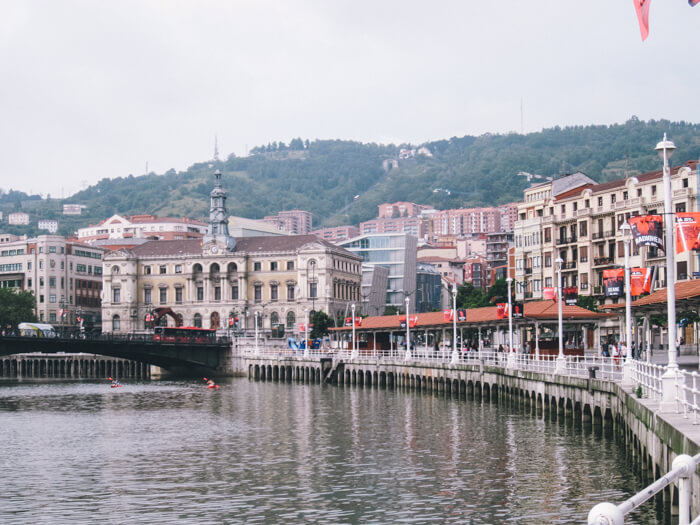
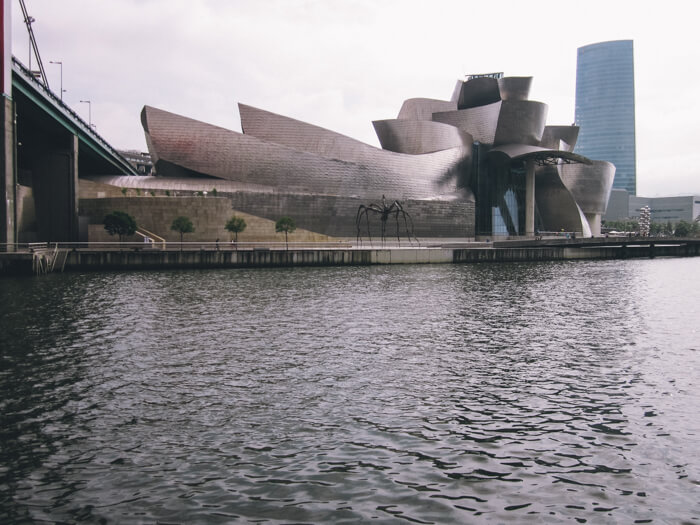
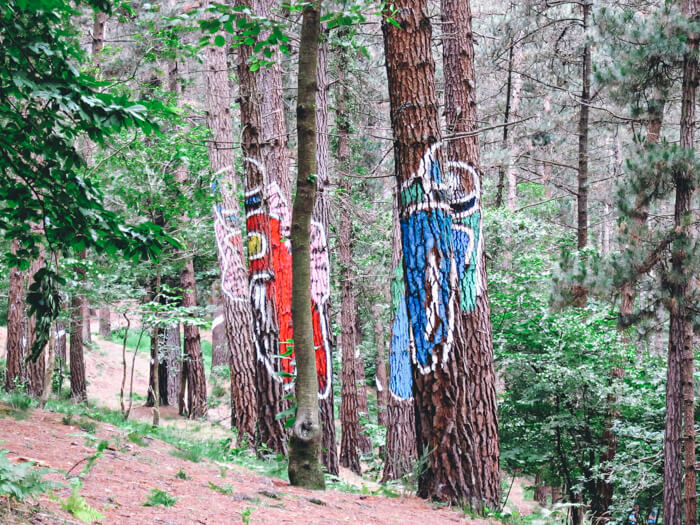
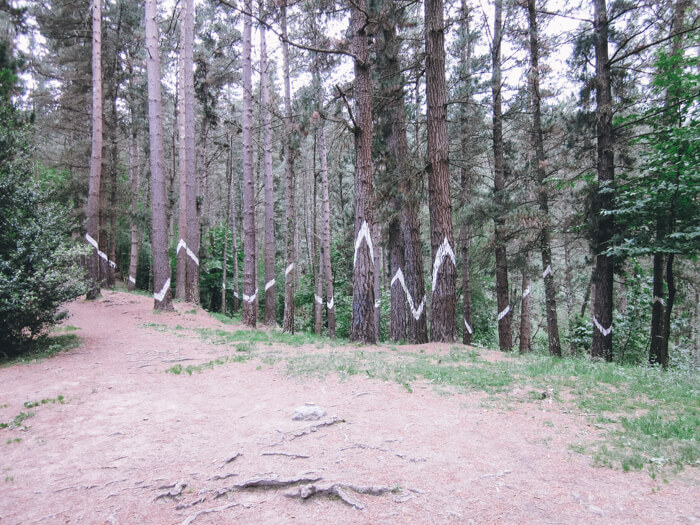
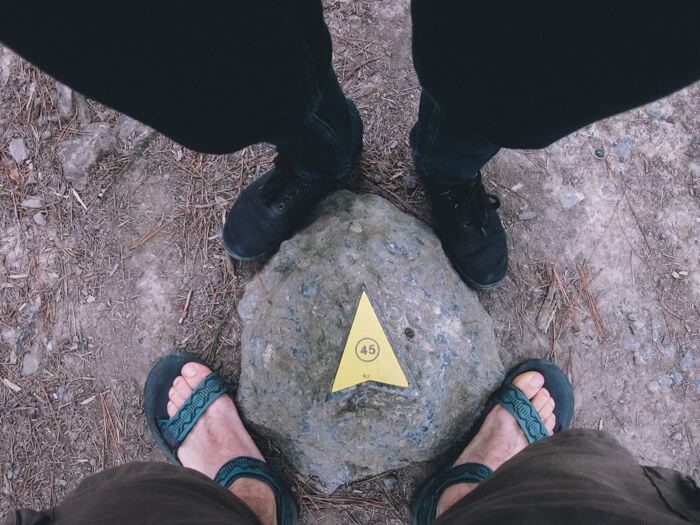
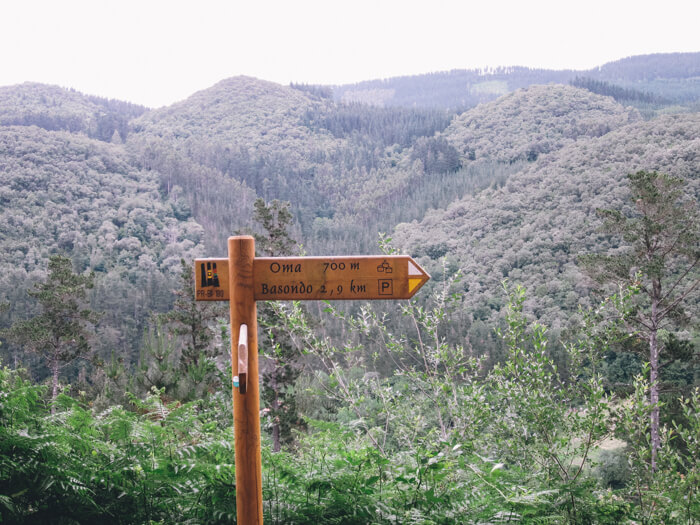
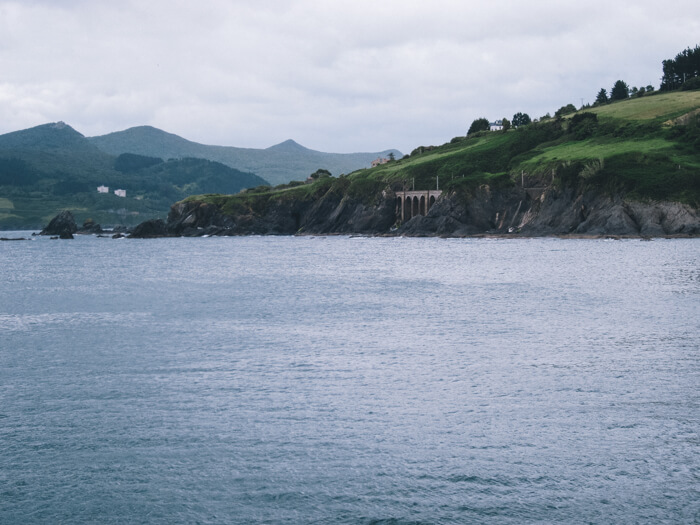
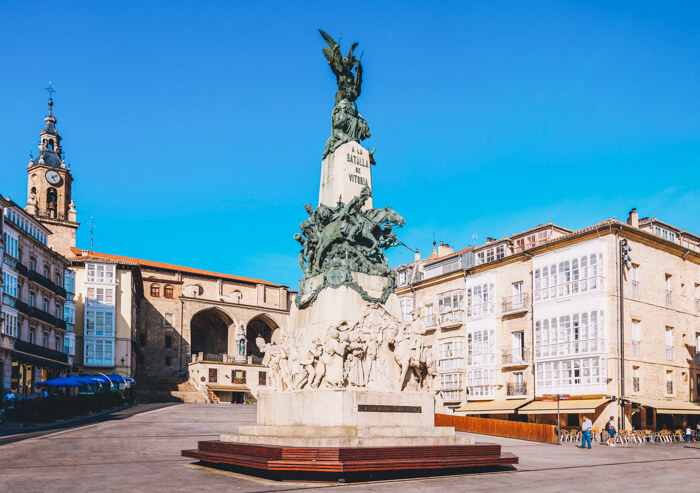
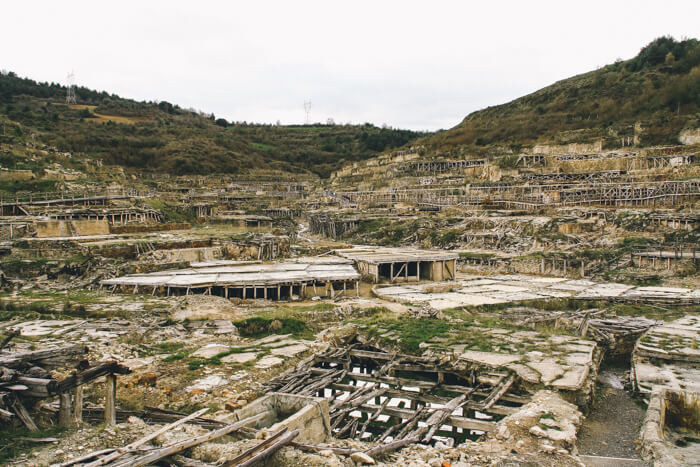
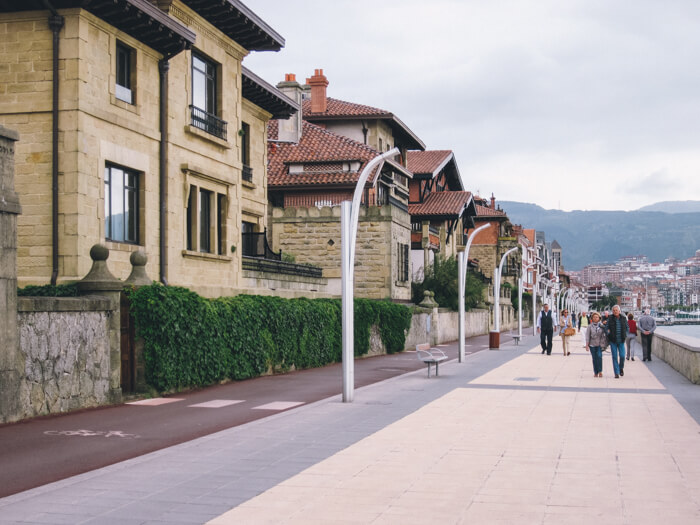
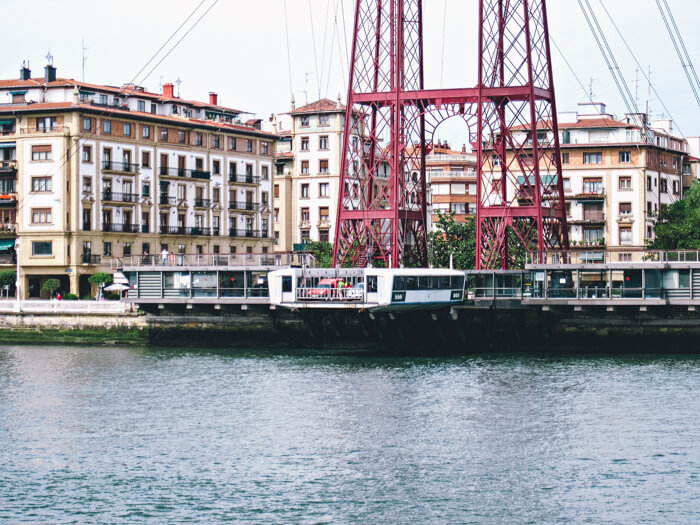
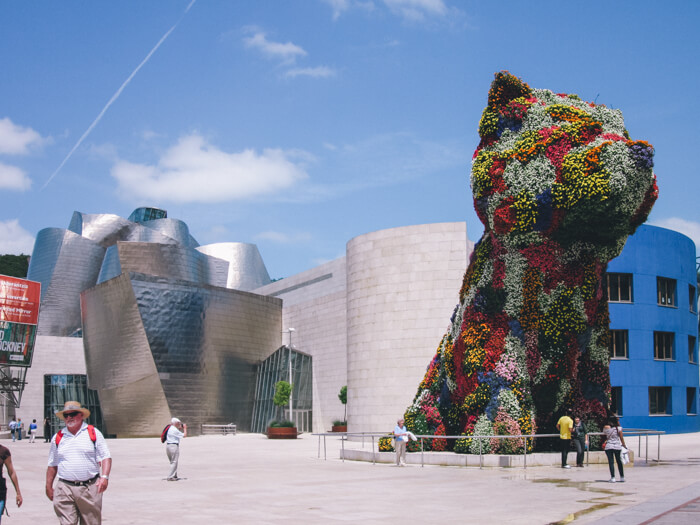
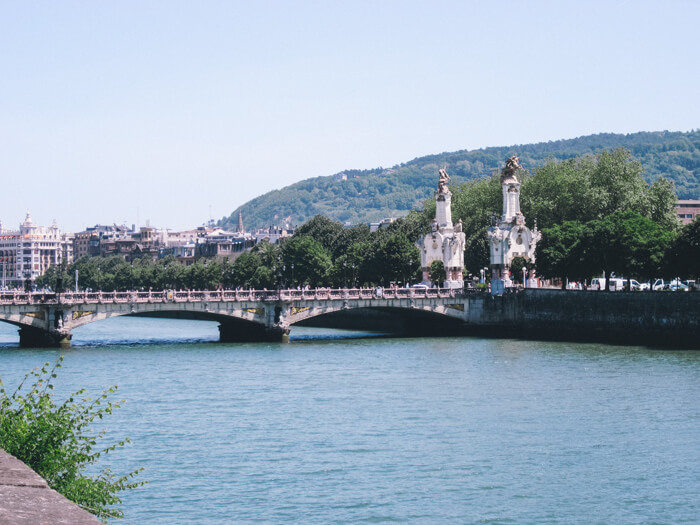
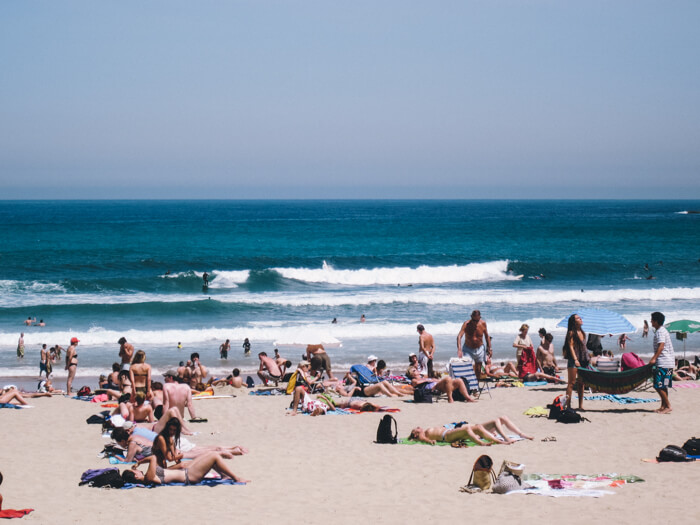
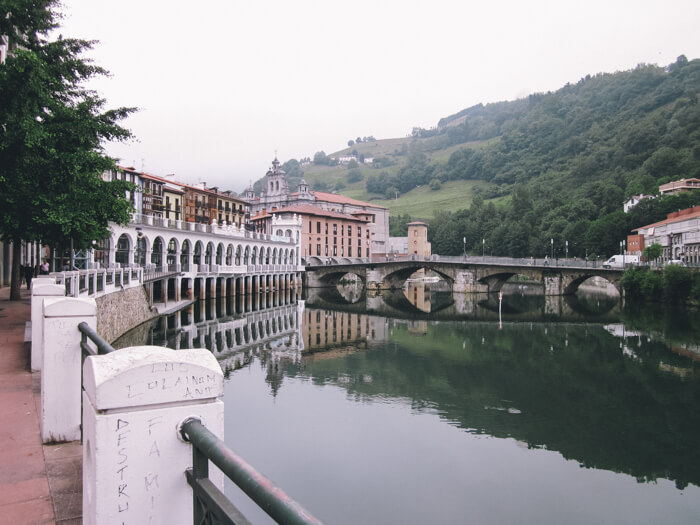
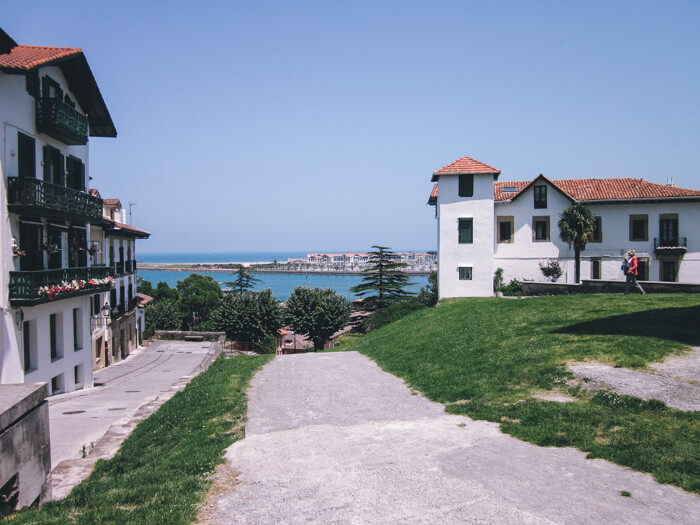
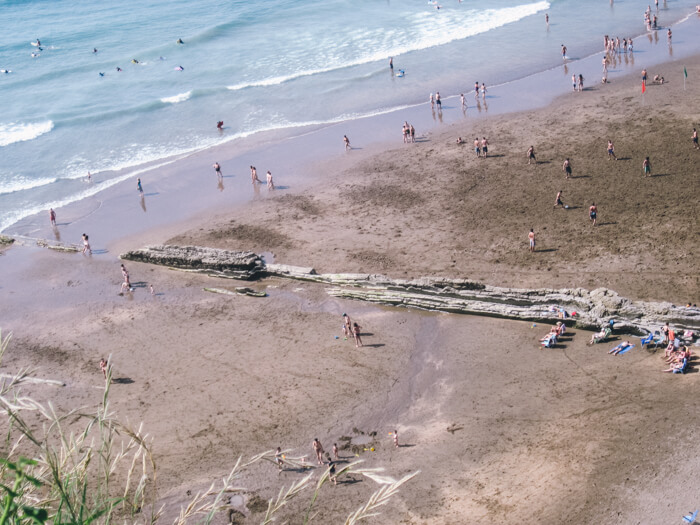
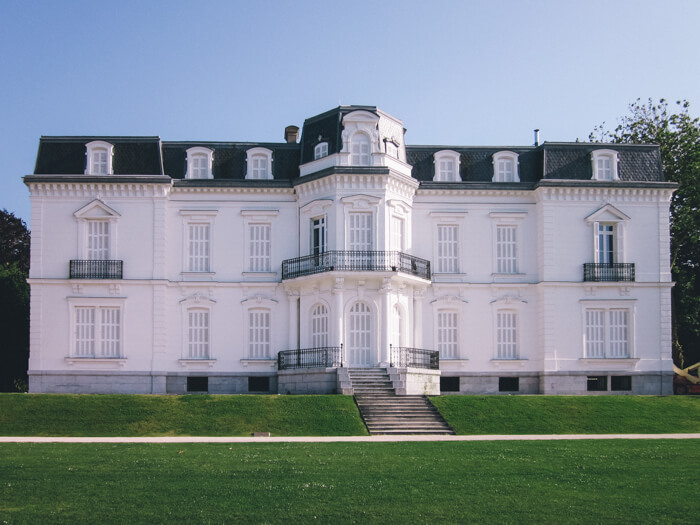
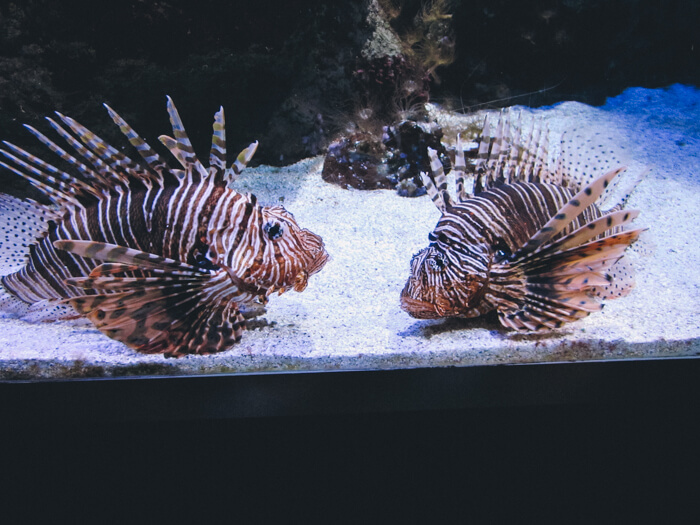
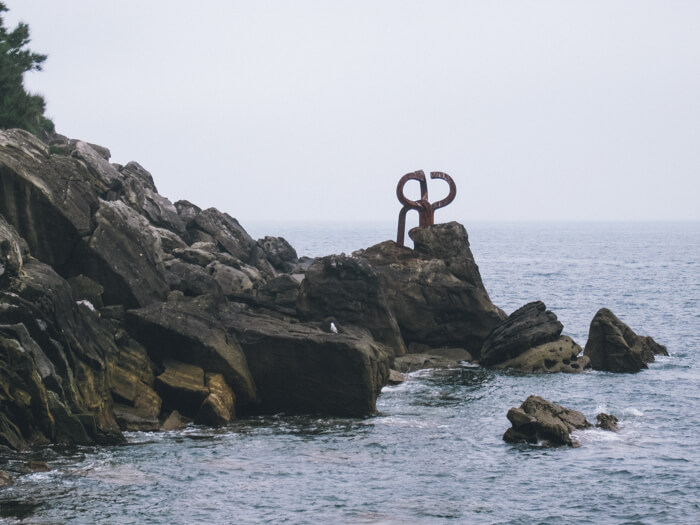
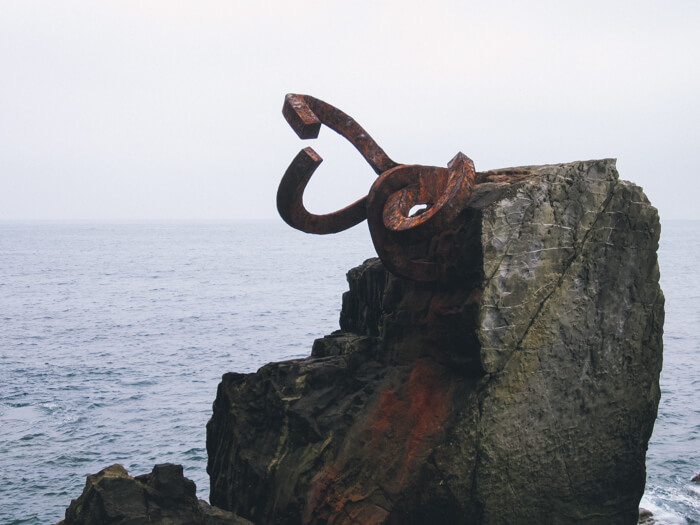
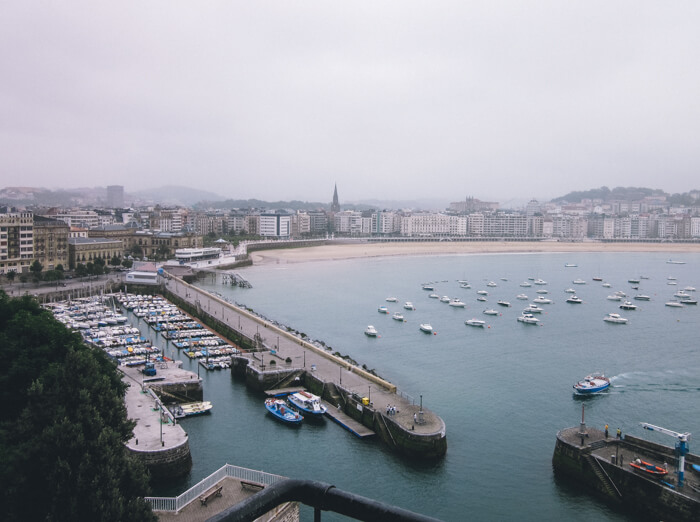
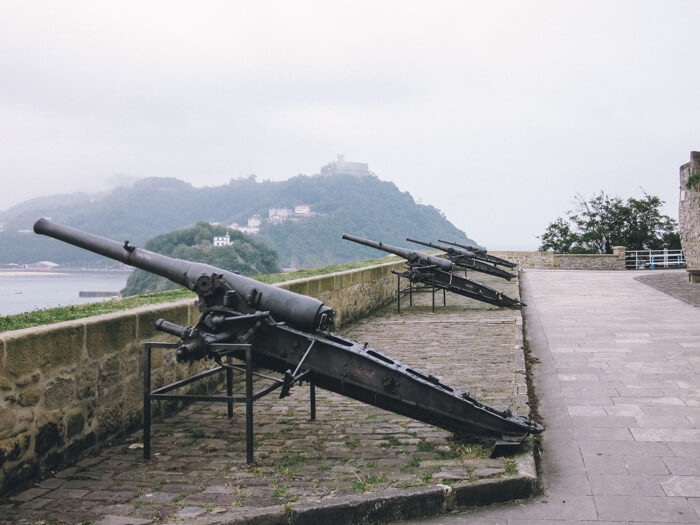
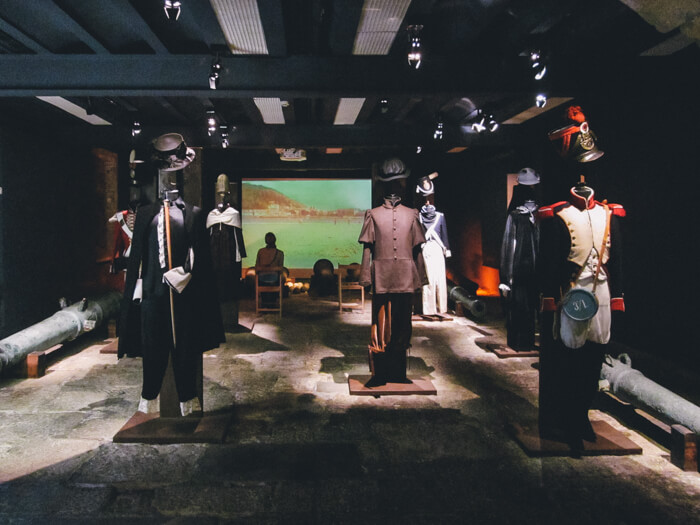
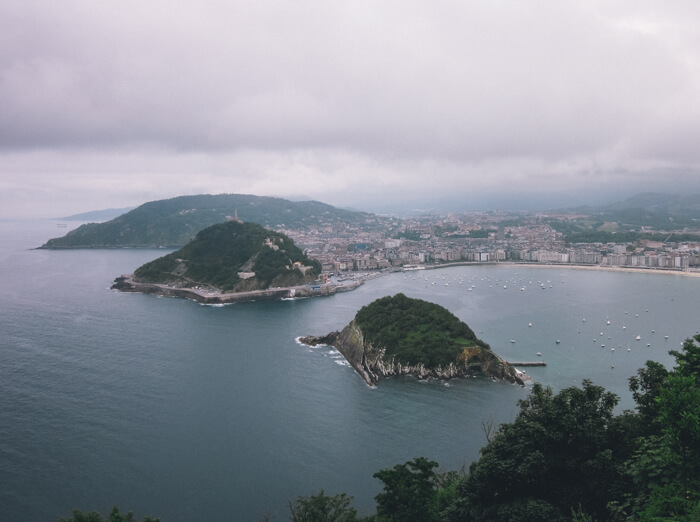
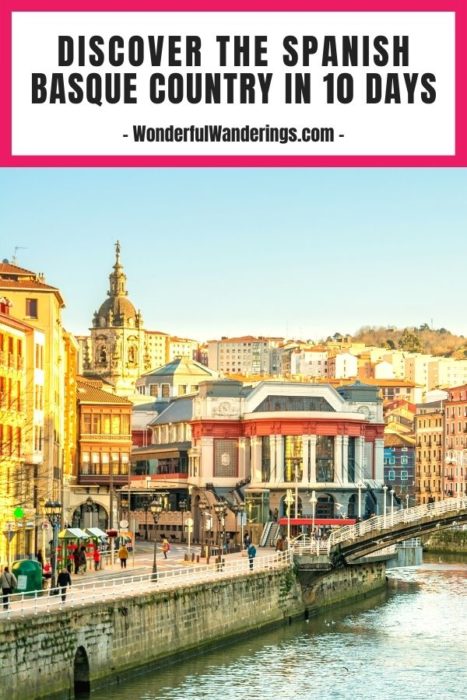
Doreen Pendgracs says
I really enjoyed my time in Basque Country! San Sebastian was amazing, and I really enjoyed the Guggenheim in Bilbao. But for me, the highlight was my stay at the Marquis de Riscal Wine Resort in El Ciego. The food, the wine, the spa and the accommodations–all were tantalizing!
Sofie says
Oh that sounds amazing! I loved both cities as well and would love to go back some time.
Valeriia says
This summer we were in French Basque Country, it was like a separate country indeed! Thanks for your tips, we’ll definitely come back to explore the Spanish part :)
Sofie says
Cool! I haven’t been to the French part yet but would love to go, although I think it’ll be a bit more expensive than the Spanish part:)
Let me know if you make it there!:)